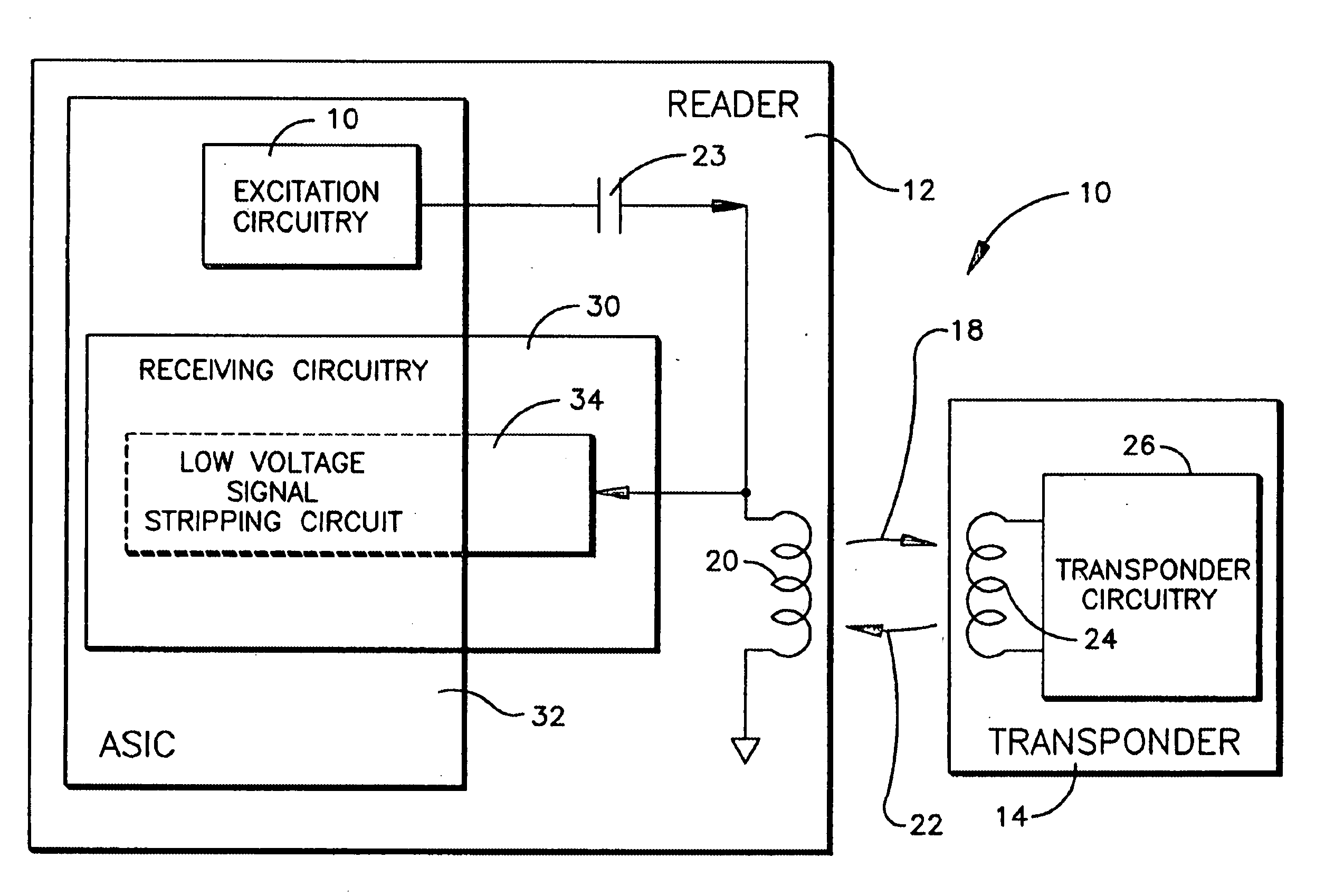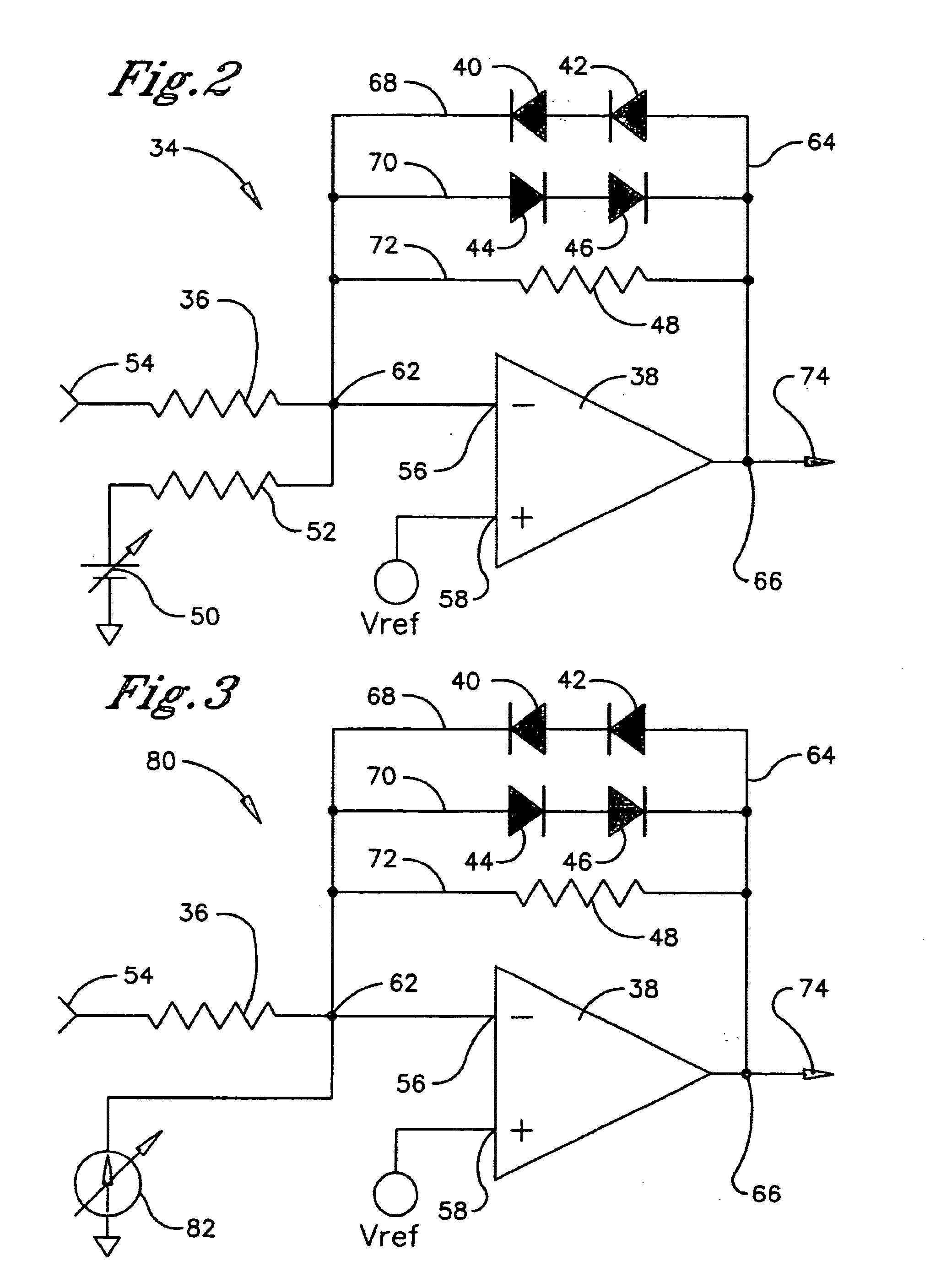Low voltage signal stripping circuit for an RFID reader
a low-voltage signal and reader technology, applied in the field of radio frequency identification systems, can solve the problems of inability to incorporate high-voltage-rated components, inability to cost-effectively integrate asics, and high-voltage components that are relatively expensive. achieve the effect of reducing gain
- Summary
- Abstract
- Description
- Claims
- Application Information
AI Technical Summary
Benefits of technology
Problems solved by technology
Method used
Image
Examples
Embodiment Construction
[0024] Referring to FIG. 1, a radio frequency identification (RFID) system employing an embodiment of the low voltage signal stripping circuit of the present invention is shown and generally designated 10. The RFID system 10 comprises a reader 12 and a transponder 14. The reader 12 is preferably an active device and the transponder 14 is preferably a passive device.
[0025] An “active device” is defined herein as an electrically powered device which has an internal electrical power supply, such as a rechargeable or disposable battery, or is hard wired to an external electrical power supply. The electrical power supply is physically coupled with the active device to directly supply essentially all of the electrical power required to operate the active device. Thus, the active device is continuously operational for its intended purpose upon being physically coupled with the electrical power supply.
[0026] A “passive device” is also an electrically powered device, but is not physically ...
PUM
 Login to View More
Login to View More Abstract
Description
Claims
Application Information
 Login to View More
Login to View More - R&D
- Intellectual Property
- Life Sciences
- Materials
- Tech Scout
- Unparalleled Data Quality
- Higher Quality Content
- 60% Fewer Hallucinations
Browse by: Latest US Patents, China's latest patents, Technical Efficacy Thesaurus, Application Domain, Technology Topic, Popular Technical Reports.
© 2025 PatSnap. All rights reserved.Legal|Privacy policy|Modern Slavery Act Transparency Statement|Sitemap|About US| Contact US: help@patsnap.com



